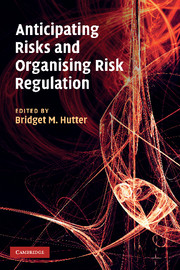Book contents
- Frontmatter
- Contents
- Contributors
- Preface
- Part I Introduction
- Part II Threat, vulnerabilities and insecurities
- Part III Social, organisational and regulatory sources of resilience and security
- 7 Regulating resilience? Regulatory work in high-risk arenas
- 8 Critical infrastructures, resilience and organisation of mega-projects: the Olympic Games
- 9 Creating space for engagement? Lay membership in contemporary risk governance
- 10 Bioethics and the risk regulation of ‘frontier research’: the case of gene therapy
- 11 Preparing for future crises: lessons from research
- 12 Conclusion: important themes and future research directions
- References
- Author index
- Subject index
7 - Regulating resilience? Regulatory work in high-risk arenas
Published online by Cambridge University Press: 10 November 2010
- Frontmatter
- Contents
- Contributors
- Preface
- Part I Introduction
- Part II Threat, vulnerabilities and insecurities
- Part III Social, organisational and regulatory sources of resilience and security
- 7 Regulating resilience? Regulatory work in high-risk arenas
- 8 Critical infrastructures, resilience and organisation of mega-projects: the Olympic Games
- 9 Creating space for engagement? Lay membership in contemporary risk governance
- 10 Bioethics and the risk regulation of ‘frontier research’: the case of gene therapy
- 11 Preparing for future crises: lessons from research
- 12 Conclusion: important themes and future research directions
- References
- Author index
- Subject index
Summary
The regulation and control of risks in high-risk arenas is a hot topic. Nuclear power stations, commercial airlines, intensive care units and chemical processing plants both manufacture and regulate risks that, if realised, can have devastating outcomes. Economic life is regularly punctuated by such events, resulting in fatal accidents, environmental damage, ruined reputations and financial loss. As such, the day-to-day control of risks in these high-risk arenas has received considerable research attention. Much of this literature is increasingly being framed in terms of organisational resilience (Sutcliffe and Vogus 2003). Organisational resilience loosely refers to the ability of organisations to contain, correct and recover from failures before these disable their operations and cause serious breakdowns (Collingridge 1996; Weick et al. 1999). The key ideas focus on decentralised processes of adaptation, flexibility and learning (Hollnagel et al. 2006; cf. Boin, Jennings and Lodge, this volume). These processes allow organisations to react to previously unforeseen risks, adapt to changing situations and accommodate unexpected disruptions. These ideas are being energetically explored, both in the literature and in practice. However, at first blush these strategies of resilience appear far removed from the ways in which notions of ‘risk’ are typically instituted in regulatory regimes and formal risk management systems. Indeed, key authors have explicitly distanced typical models of risk management from those of resilience in high-risk arenas (Rochlin 1993: 17–19; Wildavsky 1988). The regulation of risk is commonly seen as a precautionary and forward-looking enterprise (Short 1992).
- Type
- Chapter
- Information
- Anticipating Risks and Organising Risk Regulation , pp. 139 - 160Publisher: Cambridge University PressPrint publication year: 2010
- 9
- Cited by



